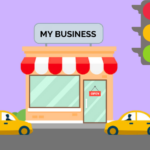As a business owner, you’ll want to make sure that your customers have the finest possible experience. If customers encounter numerous roadblocks when attempting to make a transaction with you, they are considerably more likely to abandon the notion.
Providing an excellent customer experience can also aid in the development of trust and loyalty among your customers. So, in this article, we’ll go through ways to eliminate friction in order to deliver a smooth and seamless consumer experience that will result in more sales for you.
What Is Friction in the Customer Journey?
The majority of people associate friction with middle school science class. However, if you work in customer experience, you’ve probably heard the phrase “friction” when your colleagues discuss lowering customer attrition. Friction, in this context, refers to moments in the brand experience that might have a long-term impact on a customer’s engagement with a business. Friction may even force some customers to abandon a brand entirely.
Why Is It Important to Reduce Friction in the Customer Journey?
Did you know that the average business nowadays loses 10-30% of its consumers per year?
Furthermore, research suggests that every five years, American businesses lose half of their clients. Multiply the number of churning customers by the typical customer’s lifetime value (LTV) at your company and losing clients at this pace means losing millions of dollars!
As a result, brands must have an experience programme in place that can detect friction, assist experience experts in understanding the problem(s) causing the friction, and correct them. As a result, both the experience and the customer connections have been significantly improved. So, without further ado, let’s talk about how your company can eliminate friction throughout the client journey.
How Can You Eliminate Friction in the Customer Journey?
#1 Understand The Moments That Matter
As previously said, learning about and understanding the moments that matter to customers is an important part of decreasing friction. This understanding can be achieved by mapping out a handful of the most essential client journeys. One of the best ways to become aware of problems as they occur is to learn about critical touchpoints.
Touchpoint Impact Mapping is one of the most effective strategies for identifying key touchpoints and subsequently reducing friction across your client journey. Touchpoint Impact Mapping is a novel approach to understanding the moments that are important to customers. It is unusual in that it is solely based on customer feedback remark data, ensuring a more accurate depiction of the consumer’s memory of their experience. This paints an emotional picture of the experience, emphasising what is most important to customers and allowing our clients to emphasise those moments that are most significant to their customers.
Furthermore, after you’ve identified those high-impact instances, you can use this method to immediately start tackling those problems and reducing journey friction. Understanding touchpoints and their downsides enable firms to devise solutions, execute them, and monitor their effectiveness. When establishing the value of their programme, experienced practitioners can refer to their adjustments and improvements.
#2 Talk to Employees
According to research, a highly engaged workforce raises profitability by 21%! So, while gaining your customers’ perspectives on an experience is obviously crucial, many organisations ignore talking with their staff about customer journeys in their eagerness to do so. Employees, particularly those on the front lines, can provide highly compelling and eye-opening information regarding your brand’s experience. How can brands gain access to and exploit this?
Allowing employees to offer feedback and suggestions in real-time is the ideal approach for brands to get their employees’ perspectives. Rather than depending on annual surveys, for example, firms should instead use experience platforms that provide employees with a constant voice. This also helps firms to learn about and respond to problems as they arise in real-time, rather than too far down the line for the customer’s taste.
#3 Keeping Tabs on Your Customer Journey
The idea of being continually aware of travel friction as it occurs is key to keeping it as repressed as feasible. Surveys are useful, but this dynamic is also why they are insufficient for lowering journey friction on their own—a constantly possible problem that needs a constantly active solution. Organizations cannot reach that degree of awareness in any other way.
Instead of depending simply on direct surveys, brands can achieve this by integrating survey listening with other sources of data, such as employee opinions, and contextualising it against financial and operational data. This method generates a 360-degree perspective of your consumers and their experiences, which your business can use to minimise friction, increase retention, and provide a much-improved experience.
Summing-up
Providing a positive customer experience is key to having a successful business. Today, most customers think that purchasing is about what they are feeling and seeking rather than about brands or things.
It is not enough to produce excellent products and regularly blog about them to win the hearts of your customers. When brands can remove friction for their customers and enhance their buying journey/experience, they build a meaningful connection and a lasting relationship built on trust and reliability!
If you’d like further assistance or would like to discuss anything covered today, we’d love to hear from you.
Contact us on
You can reach us |
By Phone | 020 3588 4240
Website | www.shergroup.com and you can chat to us from here
Email | [email protected]
Facebook | Check out Shergroup on this channel and message us
Twitter | Check out ShergroupChat on this channel and message us
LINKEDIN | Check out Shergroup’s LINKEDIN – and please FOLLOW us!
Instagram | Check out ShergroupChatter and follow us!






